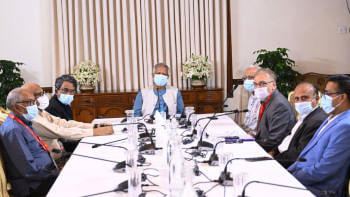Ram Dhamija: The roving photographer

Images from Ram Dhamija’s repertoire
“Photography to me is a meeting point of head and heart,” says the reclusive 87-year-old Ram Dhamija whose 41 photographs were recently on display at an exhibition in New Delhi, titled “Preoccupations: Forty Years of Imaging India.”
Traversing the length and breadth of the country on his professional work with the camera as his companion, he has touched base in places like Delhi , Punjab, Haryana, Rajasthan, Kashmir, Ladakh and Bengal . The recent exhibition reflects his passion for shooting cultural personalities, ordinary men and women and idyllic landscapes.
Among the subjects from the art world are preeminent Bharatnatyam dancer Balasaraswati (Delhi, 1970s), the striking Kumudini Lakhia ( Delhi 1960s), Kathak dancer and choreographer (the first choreographer in Kathak in India, according to Ram). Then we have Hungarian artist Elizabeth Brunner (Delhi, 1950s) holding a rabbit. Also on the walls is a photograph of Simkie, Uday Shankar's dance partner (Delhi, 1950s).
“My preference is for black and white photography. I work mostly with available natural light and available working conditions,” points out Ram. Describing how he shot Balasaraswati, he asserts that he met her one afternoon in her verandah and, in available light, captured her on his camera. “She was the best dancer of our country in her time. When I shot her, she was not in her conventional costume. I told her that you don't need any extra clothing so go ahead, I asked her choose a song and then dance. I concentrated on images; I have about 60 vignettes of her in different poses, of which 27 are on display.”
Among Ram's other brilliant frames are his series on the Rajasthan drought (1968-69) such as 'Farmer with turban; drought” and “Woman with bracelets”. There's also a photograph, titled “Girl writing” (1956, in the extremely backward Bastar, an administrative district of Chattisgarh state in Central India), while the landscapes include a highway in Rajasthan and a haystack in Haryana.
As a writer and photojournalist, Ram had a first hand view of the period (1940s-the mid '80s) when independent India was in a state of transition which he effectively captures with his camera. Ram also worked with the Ministry of Information and Broadcasting in the Press Information Bureau, a job that took him all over the country, armed with his camera. In addition, he put together a rich collection of images of performers and craftspeople as he traversed India with his wife Jasleen Dhamija, an international expert in textiles, handicrafts and living traditions.
The credit for the exhibition must of course go to his son Himman Dhamija, director of photography (DOP) on a number of high-profile feature films such as "Mangal Pandey -- The Rising" and the cult hit "Boom". He has also been DOP on over 30 award-winning short films, 40 major advertising campaigns and 10 hour-long documentaries. Himman has curated this exhibition after sifting through literally hundreds of dusty negatives. In the process, says Himman, “I have discovered a mind which was constantly exploring ideas -- and has therefore produced images which continue to resonate today.”

 For all latest news, follow The Daily Star's Google News channel.
For all latest news, follow The Daily Star's Google News channel. 



Comments